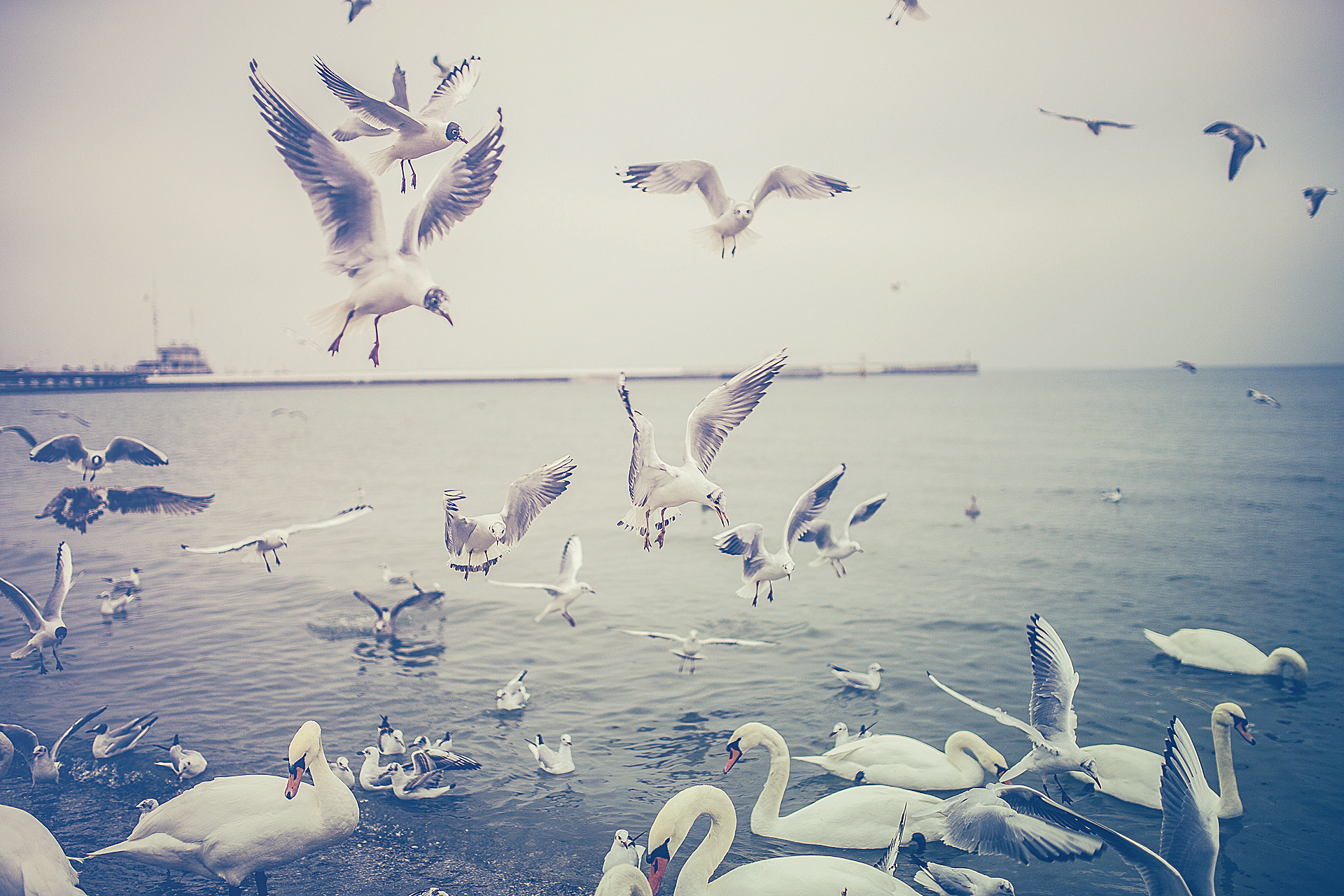Plastic in our oceans

Microplastic
We love plastic and we use it every day. Coffee mugs, bottles, straws, make up, plastic bags, food wrapped in plastic and in clothes. We use so much plastic but do not take care of it when we are done using the objects. They are thrown in the streets, flushed down the toilet or dumped right into the sea. Today, there is so much plastic in the oceans that large islands of plastic alone are formed. Animals drown, starve to death, injure themselves and die because of all the plastic we humans use. Are there only consequences for the animals and plants that lives in the seas or will the plastic we use and are so irresponsible with also bring consequences for humans? How are we affected by the plastic?
Plastic is a big problem that we have in our oceans today. We consume and throw irresponsibly far too much plastic into our nature. Marine life has been most affected. Dolphins get stuck and drown, whales and turtles mistake plastic for food and then die of starvation with their stomach filled with plastic. They injure themselves and die slowly and according to studies there will be more plastic than fish in the seas by 2050. - SVT news (2016).
How will the consequences of plastic be to us humans? How are we affected? In the article "Ny studie-Människan får i sig plast motsvarande ett kreditkort i veckan." from VA.se (2019) they write about the new study done by the World Natural Fund which shows that we humans consume as much plastic as a credit card a week. But how can you imagine? You do not sit and eat plastic pieces as Saturday candy? Every year, 8 million tons of plastic end up in the ocean. They are broken down into smaller pieces called microplastics which are then accidentally taken up by the living organisms such as fish or other animals and plants and what do we humans do? We eat fish. Microplastics also end up in our drinking water. Both the water we drink ourselves and the water for our animals we will slaughter and then eat. The microplastics are so small that they easily get into our food chain and then end up in our bodies.
Världsnaturfonden (WWF) och "University of Newcastle, Australia." (2019) performed the study together and also links to the full analysis in their article https://awsassets.panda.org /downloads/plastic_ingestion_press_singles.pdf

Then the question is; are microplastics dangerous for us?
WWF (2019) also asked this question in their study but unfortunately they could not prove that it was harmful to us. We do not know what the microplastics we have in our bodies and the ones we continue to consume will lead to. Scientist have not previously looked at how we humans could be affected or what the long-term consequences will be. The only thing you can prove is how the microplastics affect marine life and it is not beautiful. All plastic pollution costs 1 million seabirds and 100,000 marine mammals lives every year, writes Globalportalen (2018). But does that mean we should turn a blind eye to microplastics? Just because there is no study on the effects of the microplastics we consume? Well no, you wouldn't consciously choose to eat up a whole credit card?
Just because there is not yet a lot of studies of microplastics, does not mean that microplastics are harmless. Man is an animal, it is not meant that we should have plastic or various chemicals in our bodies. There is a theory that VA.se brings up in theit article "New study - People get plastic equivalent of a credit card every week." where they mention King's collage (2017) which also made a study which showed that in the long time, plastic would be harmful to us humans. There is a risk that it will affect our immune system, but more research is needed to confirm it and prove the exact effects.
On the government's own website, regerings.se (2017), they write that plastics in the seas also contribute to the spread of dangerous chemicals. The question if microplastics is dangerous to our health and how we humans are affected cannot be answered with direct research or evidence. But since we know how plants and animals suffer and die from the plastic we throw out, we should be careful.
Alva Ekvall
Gustavsson, Cecilia. 2019. "Så mycket mikroplast får vi i oss". WWF.se. Uppdaterad X. Publicerad 2019-06-12. https://www.wwf.se/pressmeddelande/sa-mycket-mikroplast-far-vi-i-oss-som-att-ata-ett-kreditkort-i-veckan-3334499/ Hämtad 2019-12-16.
Regeringen, 2017. "Plast i haven - ett omfattande mijöproblem". Regeringen.se. Uppdaterad X. Publicerad 2017-02-10 https://www.regeringen.se/artiklar/2017/02/plast-i-haven--ett-omfattande-miljoproblem/ Hämtad 2019-12-16
Globalporten 2018. "Havet är djupt och fyllt av plast" Globalportalen. Publicerad 2018-05-08. Uppdaterad X. https://globalportalen.org/artiklar/nyhet/havet-ar-djupt-och-fyllt-av-plast Hämtad 2019-12-16
X. uå. "Plast i haven" Naturskyddsföreningen.se. X https://www.naturskyddsforeningen.se/plastfritthav Hämtad 2019-12-16
VA.se. 2019. "Ny studie: Människan frår i sig plast motsvarande ett kreditkort varje vecka." VA.se. Publicerad 2019-6-12. https://www.va.se/nyheter/2019/06/12/plast/ Hämtad 2020-01-09
Mokhtari, Arash. 2016. "Rapport mer plast än fisk i haven år 2050." SVT nyheter. Publicerad 2016-01-20 https://www.svt.se/nyheter/utrikes/rapport-mer-plast-an-fisk-i-haven-ar-2050 Hämtad 2020-01-10
